
Art Forgery Uncovered- Biggest Art Fraud Scandals from 2018
The Game of Duplicity, known as the un-fine art of forgery, has always been a part of art history. In fact, forgery of art dates to more than 2000 years ago, when Roman sculptors began producing copies of Greek sculptures. Buyers at the time didn’t need to know whether they were genuine pieces, largely because it was a time when art was created for historical reference, religious inspiration, or for aesthetic enjoyment.
As times evolved, so did an increased prosperity of the middle class, which created a fiery demand for art. Art became a commodity, not only were people interested in art, they became interested in who the mastermind was behind the artwork. Artists began to identify their works with marks and signatures and monetary value of the artwork was all dependent on their identity, and in typical market fashion, demand began to surpass supply. As result, forged artworks with fraudulent marks and signatures soon appeared in the art market.
To help combat fraud and track where and who owns a real piece, provenance has become a familiar practice to authenticate artwork; good provenance indicates there is no doubt that a piece of art remains genuine and the signature of the artist remains in its threshold. However, a recent report by the Switzerland Fine Art Expert Institute reveals an estimated 50% of works circulating in the art market are forgeries. With a verified statistic this high, and eye-watering price tags to match, collectors and buyers are more and more inclined to request empirical evidence when making a transaction. Without taking the necessary steps in order to establish provenance, there really is no other way to rid the art market of forgeries. Thanks to constantly improving technology, fraudsters are faced with more challenges than ever before. Below we look at some of the biggest art forgery cases from 2018, and the process involved in authenticating whether a piece is genuine or not.
Modigliani Forgery Madness

One of the paintings on display in the Palazzo Ducale in Genoa in March 2017. Source: ANSA via The Telegraph
The most expensive painting sold at auction in 2018 was Modigliani’s Nu couché (sur le côté gauche), which sold for $157.2 Million dollars! Modigliani’s works come with substantial dollar value attached to them and unfortunately, that same dollar value comes at the price of becoming a victim of forgery. In fact, Modigliani is one of the most copied artists in the world.
In the spring of 2017, 21 of Modigliani’s pieces went on display in Genoa’s Palazzo Ducale. The exhibition caught the attention of tens of thousands of spectators near and far. However, Carlo Pepi, an art expert from Tuscany, raised doubts about the authenticity of the works on display and alerted the Italian authorities. Pepi raised concerns about the works during the promotion of the exhibition with a reprint of 1918 oil painting, “Marie the Daughter.” Pepi states: “My goodness, when I saw the poster of Marie and then looked through the catalogue and saw the others, I thought, poor Modigliani, to attribute to him these ugly abominations.”
The exhibit soon came to a halt in July 2017, due to claims of forgery. The works underwent extensive testing for the next few months, concluding that 20 out of the 21 were forgeries.
Because of the reputation of forgery surrounding Modigliani’s name, many institutions in France are conducting extensive forensic examination on all Modigliani works. Ten French museums have partnered with their national scientific laboratory to conduct a two-year forensic examination of all Modigliani’s works in French public collections. The project will put 29 pieces under the microscope, including 3 sculptures and 26 paintings. The Centre for Research and Restoration of the Museums of France (C2RMF), which is based in the Musée deu Louvre, began the examination of the works in May 2018. The C2RMF will be conducting scientific imaging on the pieces as well as using chemical studies of synthetic pigments. The pieces will also be sent to the National Center for Scientific Research in Lille, where scientists will be examining the organics materials of the pieces.
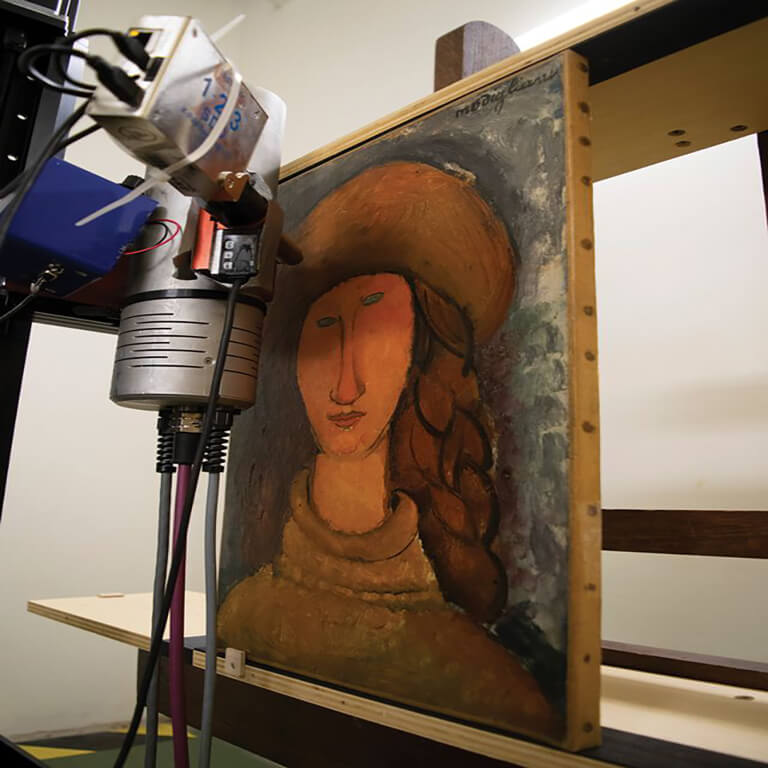
Modigliani's Portrait of Jeanne Hébuterne (1918) from the Musée d'Art Moderne de Troyes undergoing X-ray fluorescence analysis. Source: C2RMF/Vanessa Fournier via, Art Newspaper
The study is dated to conclude in December of 2019, the results and conclusions will be published along with a scheduled symposium in 2020, which will be the 100th anniversary of the artist's death.
Artworks of the Russian Avant-Garde Deemed “Highly Questionable”
In October 2017, The Museum of Fine Arts in Ghent, Belgium (MSK Ghent) acquired some pieces for their permanent collection, to go on display to the public. The exhibition celebrated never-before-seen Russian avant-garde works from radical artists such as Wassily Kandinsky, Kazimir Malevich, and Alexander Rodchenko. It included 26 pieces that were on loan from the Dieleghem Foundation, which is a charity owned by Brussels art collector, Igor Toporovski. Several of the pieces at the exhibition had become under scrutiny from a prominent group of Russian art specialists. In an open letter, the group questioned the authorship of the works.
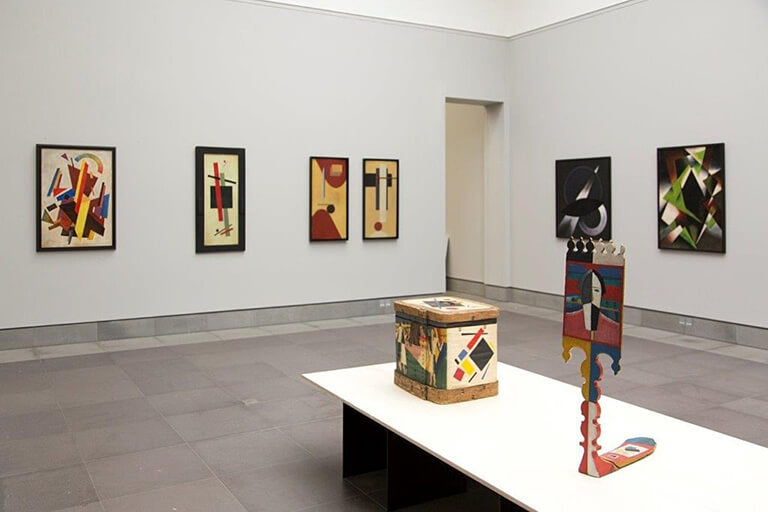
Works displayed (in order from left to right) by Olga Rozanova, Kazimir Malevich, El Lissitzsky, Alexander Rodchenko and Lyubov Popova. Source: Museum of Fine arts, Ghent via, Artnet
Together, the specialists stated all 26 pieces were defined as highly questionable. They had no exhibition history, no documentation in academic research, and a lack of provenance. The works of notable artists such as Kandinsky and Jawlensky had not even been recognized by a Catalogue Raisonné (a scholarly compilation of an artist’s works). On top of this, the museum does not offer any information about how they assembled the exhibit without documenting the process.
Artnet news was able to reach a spokesperson from MSK Ghent, who stated that the museum had followed standard procedures to review the loans that were to be featured in the exhibition, by conversing with the collector and reviewing the material supplied by the foundation. The museum went on to pass the task of providing documentation to the collector. The spokesperson states: ”It is not the task of a museum to conduct chemical tests which are only done in cases of doubts before making acquisitions, not for loans,” the museum spokesperson said. “We have acted throughout, we believe, correctly in this matter, and in good faith.”
Artnet news went on to contact Toporovski about the documentation process, in which he states: “In the international museum practice neither certificates of authenticity, nor chemical conclusions are required. Nevertheless, each art-work belonging to the Foundation has its own file: provenance, history and technical description (condition). The Foundation can provide this information on request, for research, scholars and professionals.”
All 26 of these works have not yet been proved as forgeries, albeit, critics stat that lack of proper documentation should provide enough reason for the museum to forgo the exhibition due to concerns about misleading the public.
Museum to Honour Etienne Terrus’ Legacy Discovers Half of its Collection is Fake
A community of 8000 people of Elne proudly stood together at the re-opening of its Ettiene Terrus Museum. Art historian, Eric Forcada soon raised doubts about the artworks when he visited the museum. Forcada states “on one painting, the ink signature was wiped away when I passed my white glove over it.” With these findings and his observations, Forcada alerted the local authorities and requested an investigation.

What Can We Learn from These Incidents?
There is no doubt that original works of art hold special significance. Our appreciation of originality doesn’t only come from aesthetic attitudes, but also on the originality that comes with the artist’s ideas, and their creative process. We also consume through our senses, so when we look at an original by our favorite artist, it’s likely we’ve been on a profound journey to get there. Many will invest time and money to go on a personal artistic mecca to be in the very room that the real painting is on display. For many, we’ll be amongst a crowd, lining up to get that essential selfie with the Mona Lisa, or shuffling our way through the Sistine Chapel, necks craned, praying we don’t trip over while trying to memorize every detail because photography is banned. Through all of this, we somehow feel the essence of the artist, and it’s because of that special feeling that forgeries can be so hurtful to those who feel mislead, betrayed and blinded by trusting what they are admiring is authentic.
In order to acquire a piece of art, there is a lengthy process in order to establish provenance through scientific analysis, historical research, and obtaining a certificate of authenticity. These cases highlight the importance of validating artwork. Making sure to take all the steps in order to confirm that monetary, cultural, and moral value are still upheld and any loss that occurs is not to be tolerated
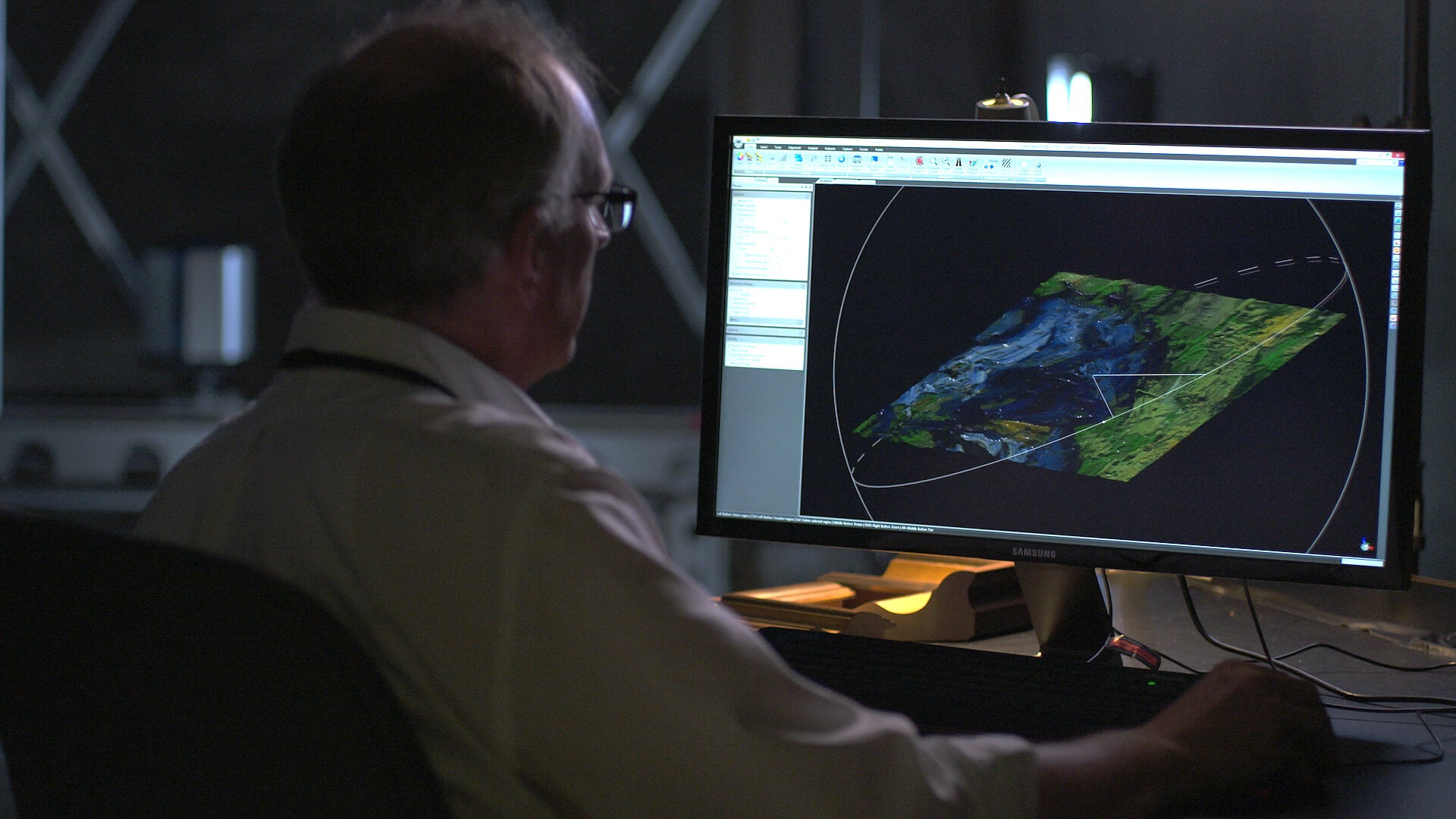
Arius Scientific Advisor, Mike Jackson taking a closer look at our scan of Van Gogh’s Iris.
Despite due diligence, unfortunately even in 2018 (and 2019) the risk of coming across a forged piece of art is highly likely. With pioneering data capture technology for art work, Arius strives to offer much-needed transparency within the art market. We are utilizing our team and technology to aid collectors and museums in verifying their transactions by offering them securely captured art data that accurately maps the color and geometry of a painting. Using our scan data, we hope to create a ‘digital fingerprint’ for every piece, eventually lessening the risk of anyone coming across a forgery. To find out more on how Arius plans to use technology to combat forgeries in the art market, take a look at our findings from the Deloitte’s 11th Art and Finance Conference, where we participated in a panel discussion about the role of Big Data and AI in the art world.
1 Response
Leave a comment
Comments will be approved before showing up.
Also in News

Turning Back Time on Turner - An Arius Technology Digital Restoration Prototype

The Art of Insuring Art: A Practical Guide for Insuring Your Art Collection
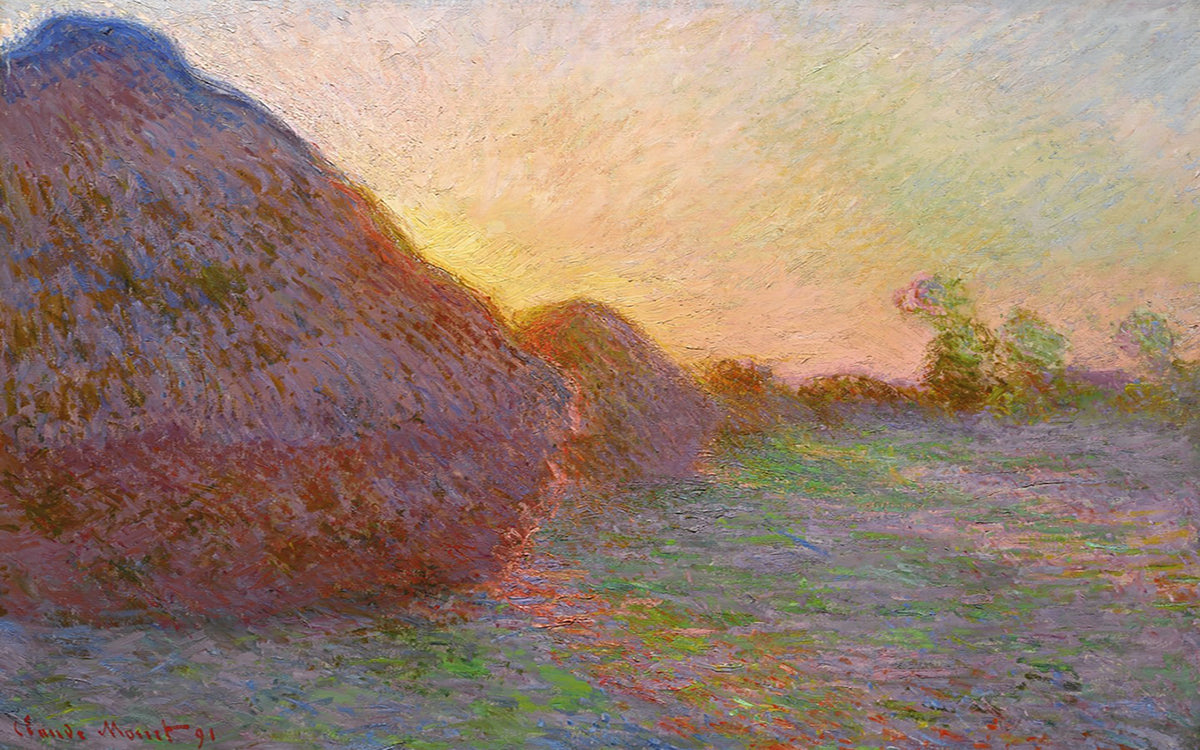
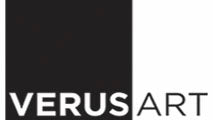
SUSANNA DE VRIES-EVANS, AM
September 16, 2019
I am an art historian and author of art books (see wiki) and delighted to read of your work. I write about forgeries. Australai is filled with art forgeries. perhaps you should set up a branch here, most conservators work for universities adn are not allowed ot menition the ’ word r fogery in their reports. Why not set up a branch in Australia?.
. Susanna de Vries, Member of the Order of Australia for services to art.